Click to view our Accessibility Statement or contact us with accessibility-related questions





















How To Dye Knife Scales
This is something I got into a while ago because I kinda like the idea of personalizing my knives and I like how certain colors look in the light. It's turned into a hobby. I don't know that there's a deeper meaning to it than that - I try to do things I like :)
There's lots of resources available if you want to learn about dyeing things online, and considerably fewer out there about dyeing knife scales. There's walkthroughs for doing this on the stove, and you can try that if you want. Some of the methods I have seen are... well, dangerous, and not in a good way. Others work but have little room for error -- I occasionally do a dyeing job on the stovetop now, but it's fast and somewhat imprecise, so a while back I ended up experimenting and drawing on background information a bit to come up with an alternate process to do it. I use a microwave! In a lot of ways, it's much easier, and you aren't staining up a metal cookpot, and especially once you get used to it, it's a lot easier to get just the effect you want, no darker or lighter.
The first and arguably most important step is the knife you choose. It is very easy to turn a light or neutral color into a dark color, and it is impossible to turn a dark color into a light or neutral color. It's hard to see color differences on a dark hued knife (like trying for green or blue highlights on a predominantly black knife) and it's pretty easy to dye things very dark when you're just screwing around. So you can't do anything you want with dye, there's limitations. As a general rule you have a lot more options with a light colored handle, especially if it's going to be a dramatic change. White, light greys or tans end up influencing the final color the least, but the easiest color to dye ends up being 'jade' -- which is the color of G-10 resin with no dye in it. It's translucent, light, and takes dye well. Especially if you are hoping to create a 'grain' effect on the knife, you want to also choose one that's rounded, because it's the rounding that exposes the layers of fabric in the G-10 in that nice grain pattern. Very flat scales don't give you that.
You can also dye to create a crisp contrast between layers of the G-10. This works best on solid colors, greens and blues. Hunter orange dyes red astonishingly well. But today I'm just going to dye a TwoSun TS80 Jaeger indigo.
Jaeger (or Jäger) means huntsman, so green would be a classic choice, but I've already got a hunter green TS80, and while I have a navy blue one I don't yet have one in indigo. So, an Indigo Jaeger.
Note the rounded scale, exposed grain and jade G-10. One of my favorites knives to dye.
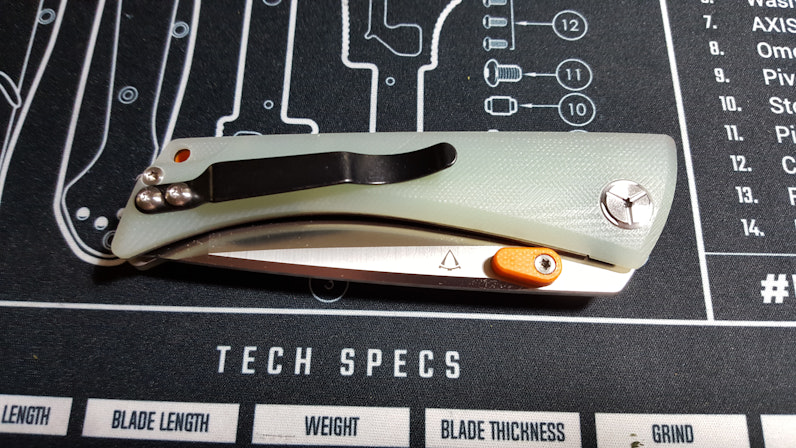
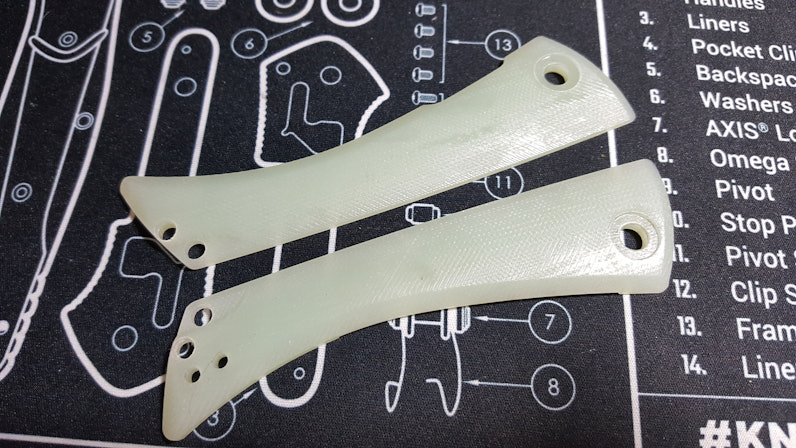
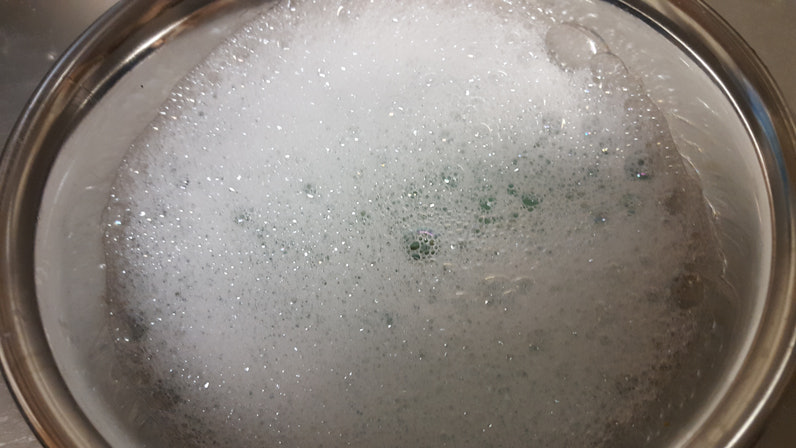
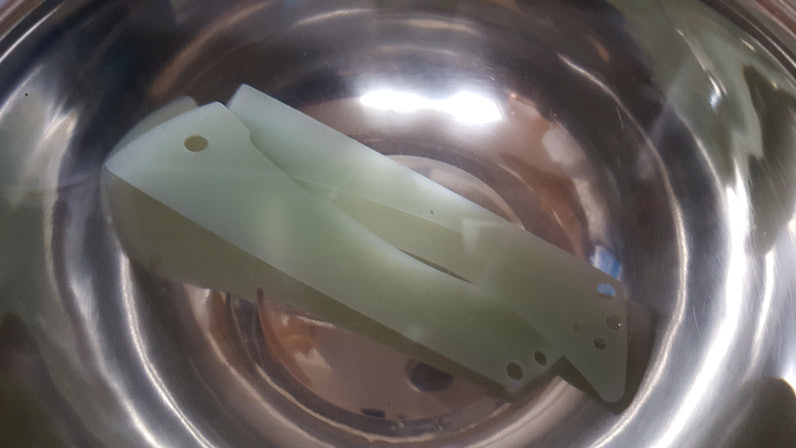
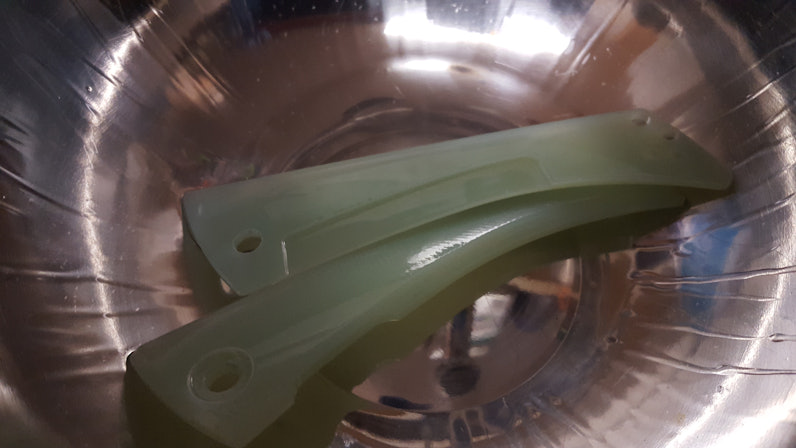

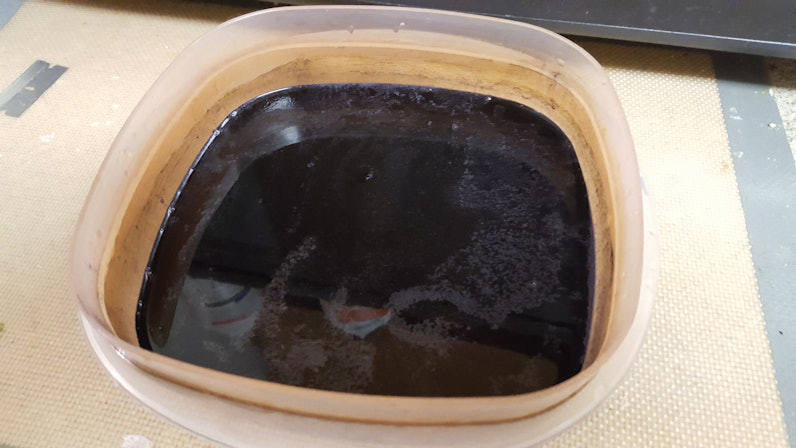
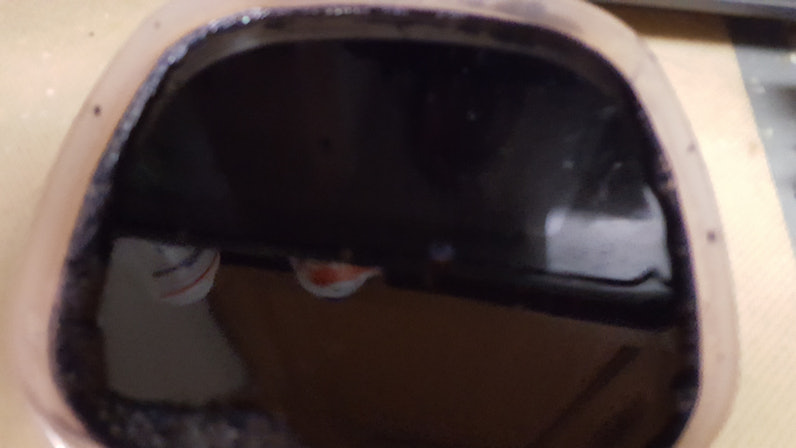
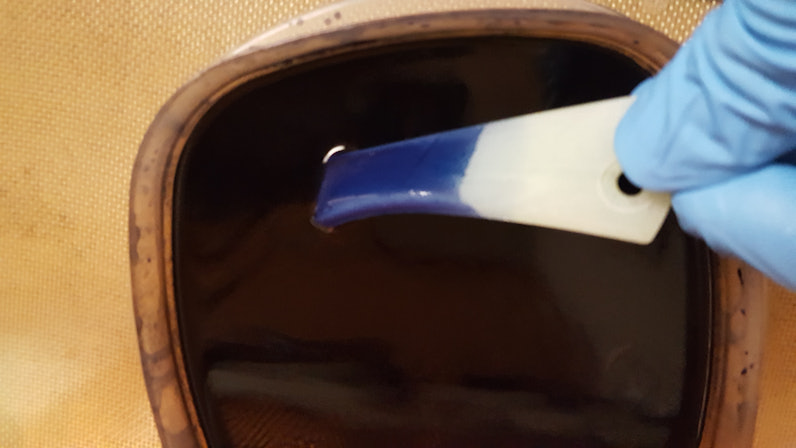
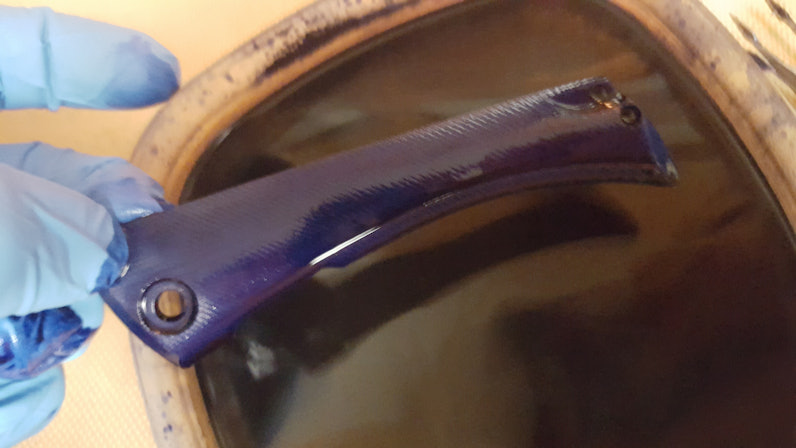
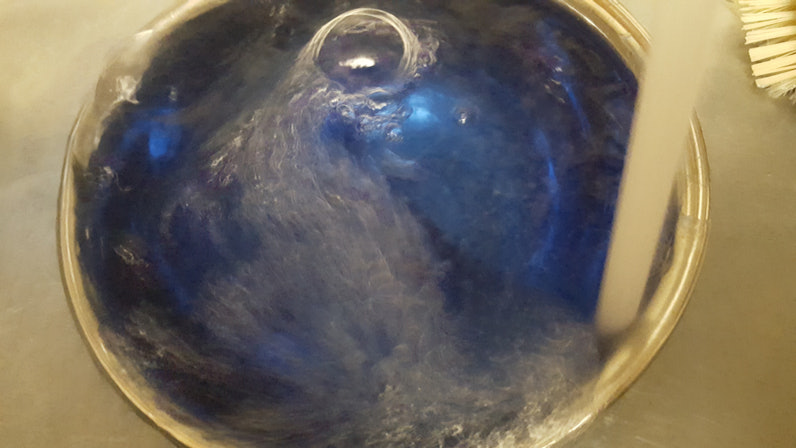
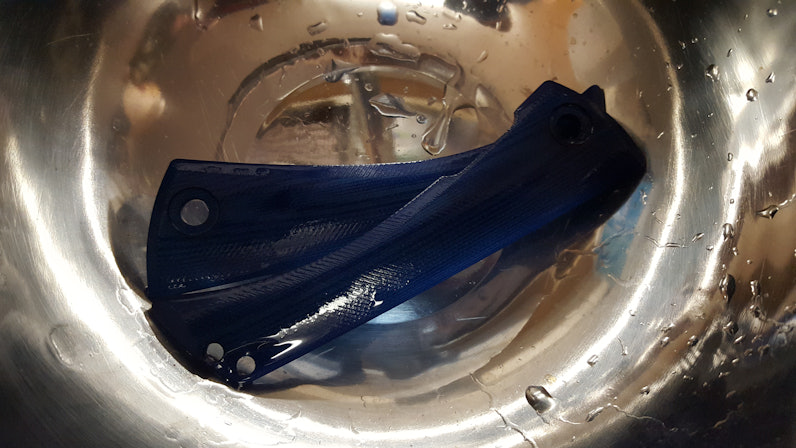
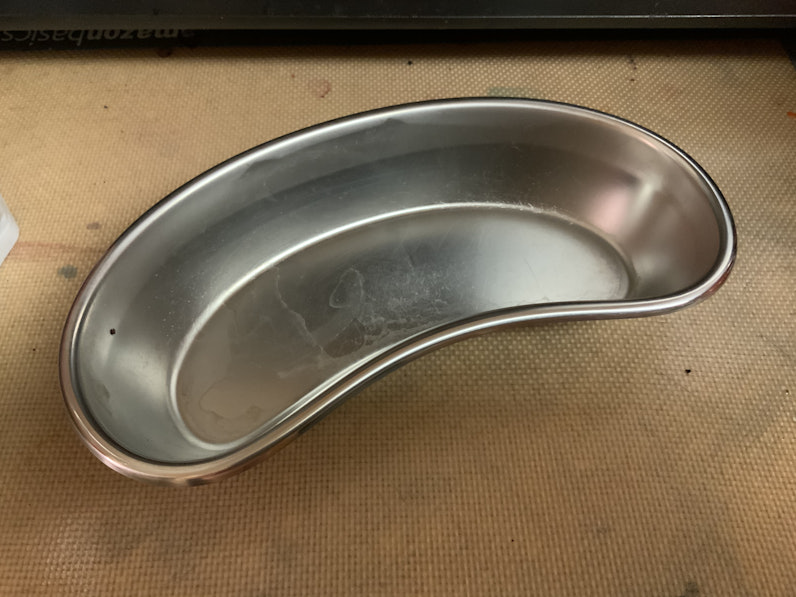

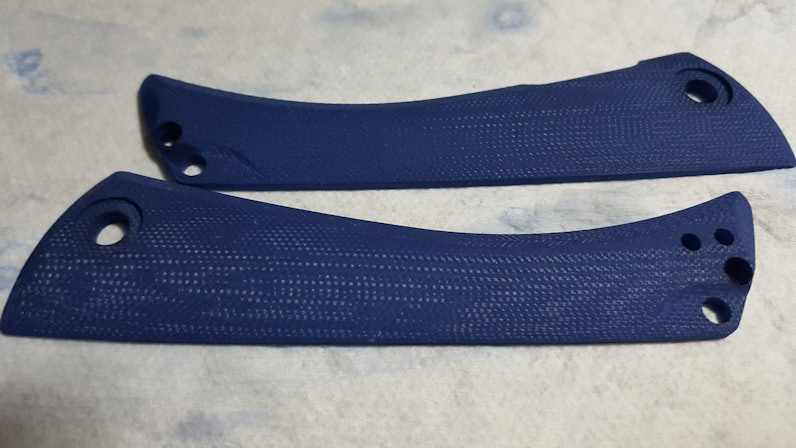
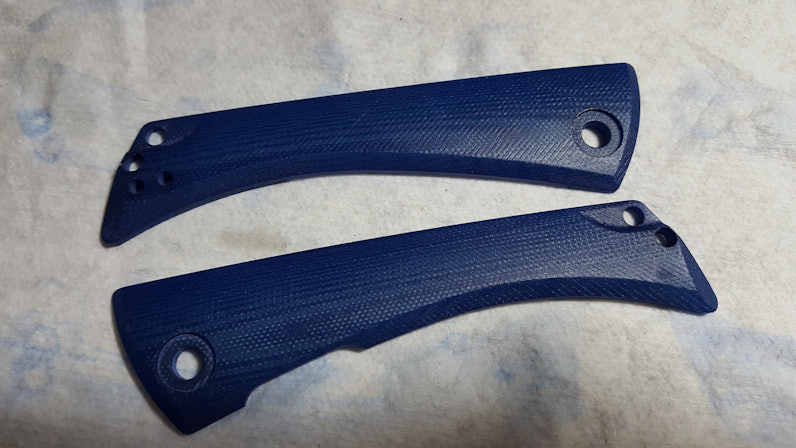
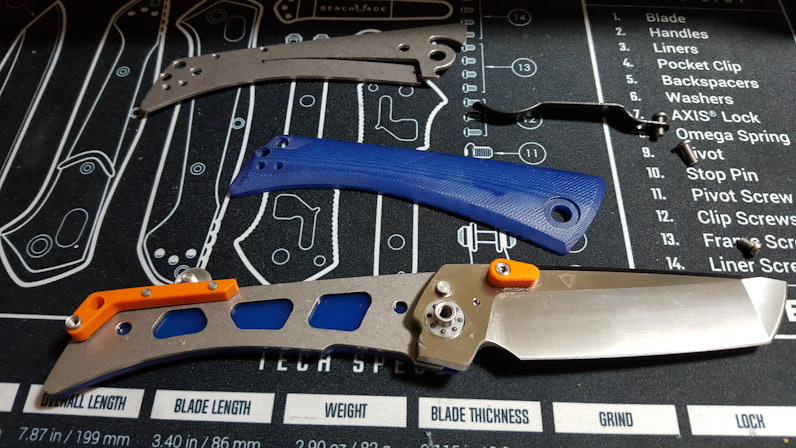
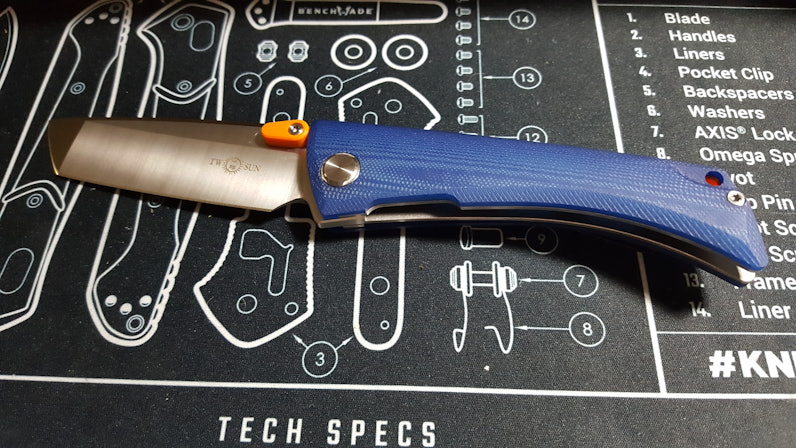
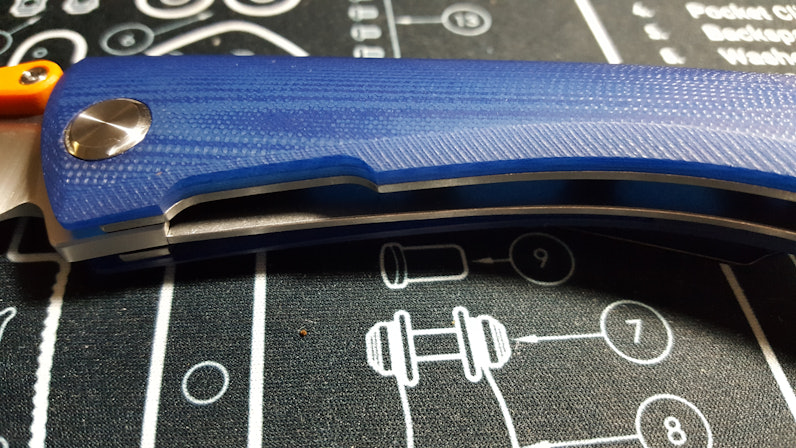



















(Edited)

search
close
Sort by: Newest
keyboard_arrow_downhidefromdad
1
Mar 28, 2021
Great tutorial! love how thorough you were. I was looking to dye my orange g-10 butterfly knife scales a dark black but was worried I would end up with an ugly brown. Any ideas on how to avoid brown and go straight to black?

reswright
3850
Mar 14, 2021
Latest Efforts
From left to right:
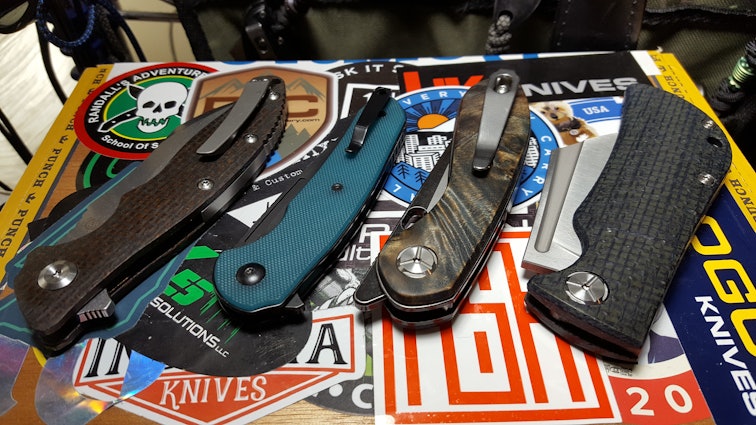
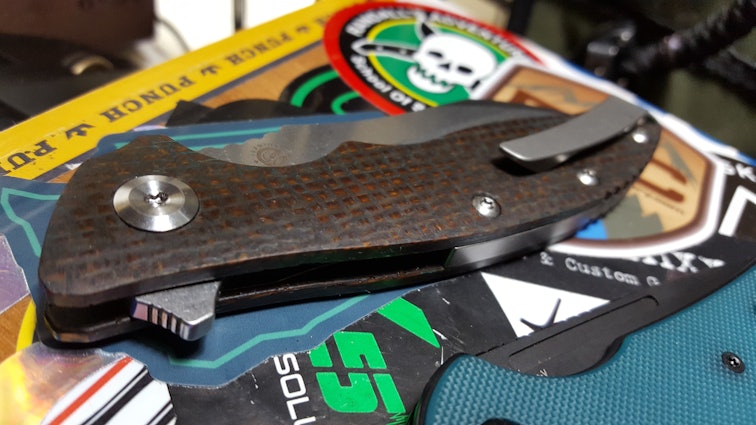
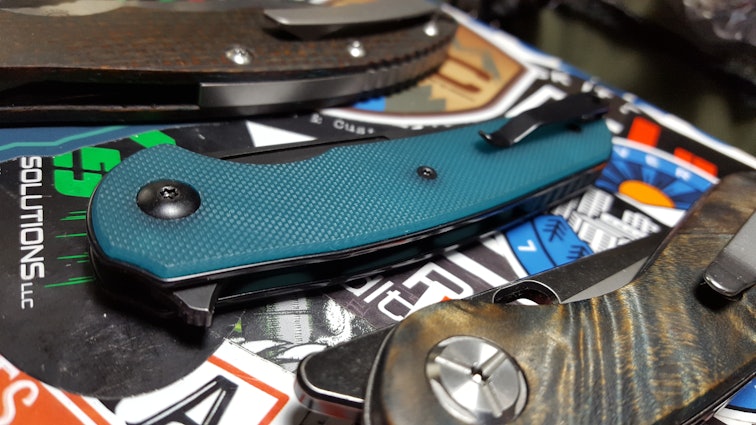
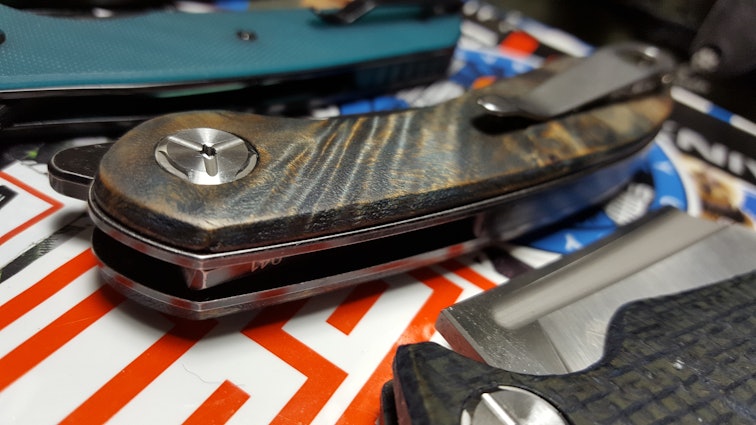
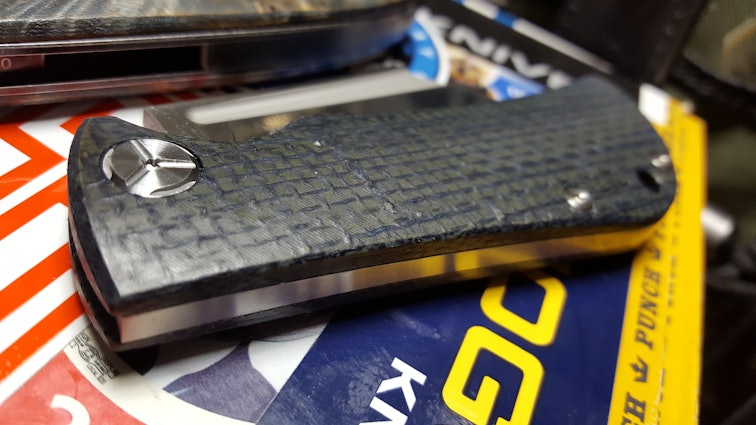
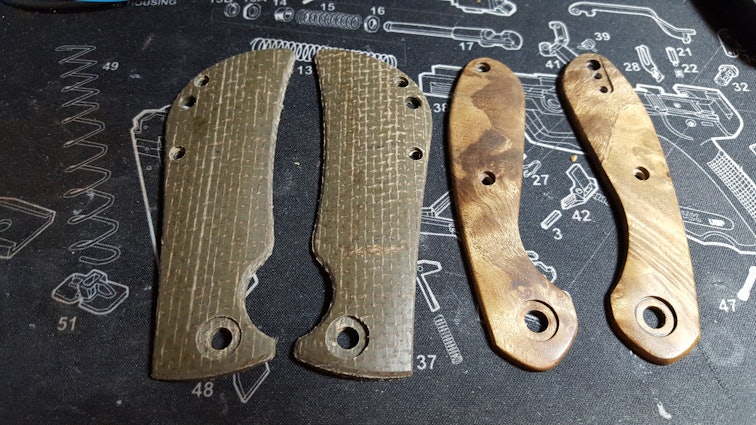






(Edited)
Fido23
1
Mar 11, 2021
Brilliant advice. A joy to read your instructions rather than a YouTube video! Looking forward to dying some grey scales a deep red, or however they turn out in the end.
mdeous
230
Mar 3, 2021
Haha, I was looking for info about scales dying on Google, and look who I found! 😁
Does the same process work for micarta? Micarta looks like the color might come from the fabric used to make it and not from external dying, but I could be wrong. I have some brown micarta scales I'd like to turn black but I don't know if that would be possible. Ever tried such a thing?
Edit: looking at your comments it looks like I'm right about pigmentation of micarta but they still could be dyed depending on the color, for black it might be worth a try!
(Edited)

reswright
3850
Mar 3, 2021
" Also, what's supposed to be the effect of vinegar in the solution initially?"
Vinegar's a mild acid and it, like the salt, helps fix the dye in the item. Unlike the salt, which helps drive charged chemicals across the surface of the item down an osmotic gradient, the acid lowers the pH a bit - acid added to water converts to a salt and hydronium ions, and the hydronium helps dye affix to fiber and reduces the amount that will wash out. It's not what they call a mordant, because it doesn't stay in the scale as part of the binding -- it just converts the dye to an ionic state that lets it more easily affix itself to another molecule.
I think it may lightly macerate G-10 resin which exposes more of the glittery glass fiber, making it more tactile and giving it a jeweled shine. But again, I think it may hit Micarta a bit harder, at least at hot temps. The other thing about Micarta is that the fibers will swell in hot water and this may dislodge bits of resin on the surface just through physical action, which could account for the roughening of the texture -- it might not be the acid at all, but my sense of it is that the acid contributes.
I should get around to trying some room temperature steeping of Micarta in dye, but haven't yet.
mdeous
230
Mar 5, 2021
reswrightThat's interesting science!
I've seen many people dying micarta at room temp with what looked like good results, maybe it could prevent what you noticed with the texture. I gotta investigate the different ways of doing it and the pros/cons, but I'm afraid I'm gonna dive into a rabbit hole...

DougFLA123
1404
Feb 20, 2021
I have the ZT 0308 with coyote tan scales (I think they look awful) that I’d like to turn black. It doesn’t seem like they make Rit DyeMore (for synthetics) in black (I could be wrong), only the all purpose Rit dye comes in black (I think). They do make Rit DyeMore in charcoal Gray but I’m not sure I want charcoal Gray scales. Anyway, I’m not sure which dye would take better to G-10. If they do make Rit DyeMore in black, I don’t know if G-10 falls into a “synthetic” classification. I’m also not sure how porous G-10 is. Have you experimented with both Rit products?

reswright
3850
Feb 23, 2021
I've only ever used the liquid but my understanding is that it is indeed the same once in solution.
14themoney
1395
Jun 27, 2022
DougFLA123In my very limited experience, the purple scales that I created were quite dark. I believe that if I had left them in the pot for another 5 or 10 minutes, it would have looked quite black.

reswright
3850
Feb 18, 2021
CJRB Feldspar (Large) S35VN/jade G-10 dyed sapphire blue
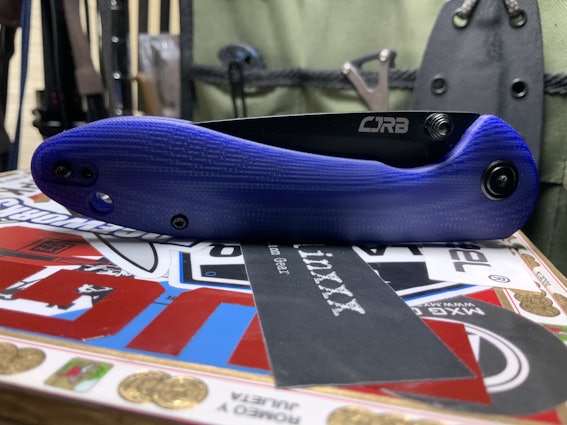
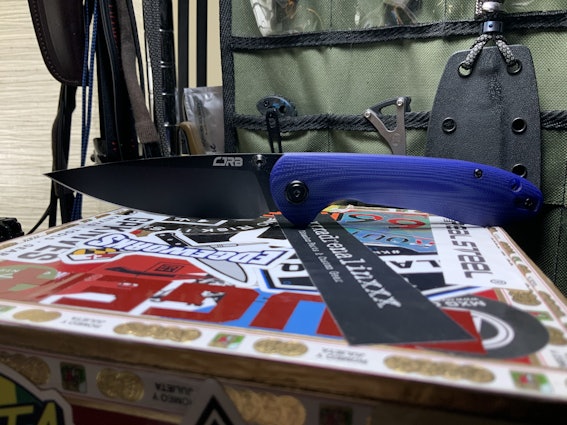
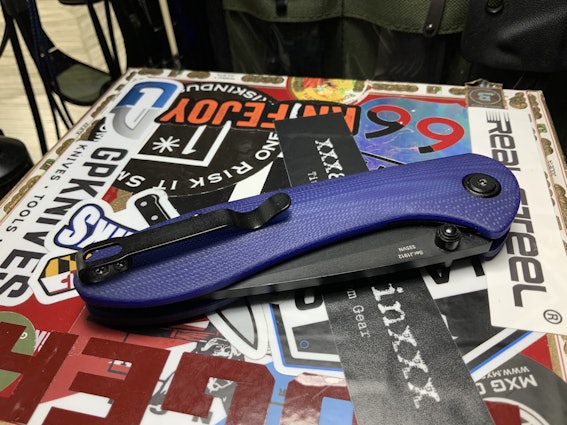
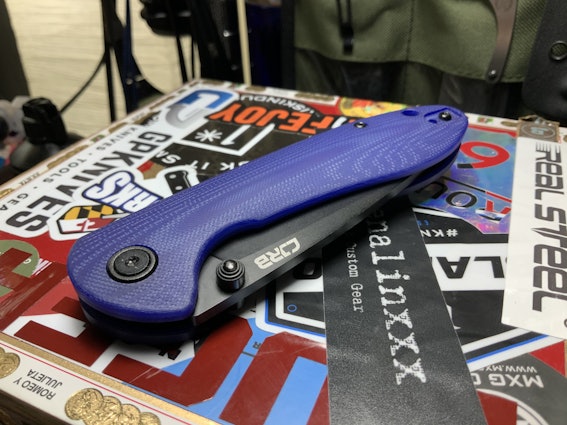





reswright
3850
Feb 18, 2021
Daggerr Sting D2/jade G-10 dyed sapphire blue
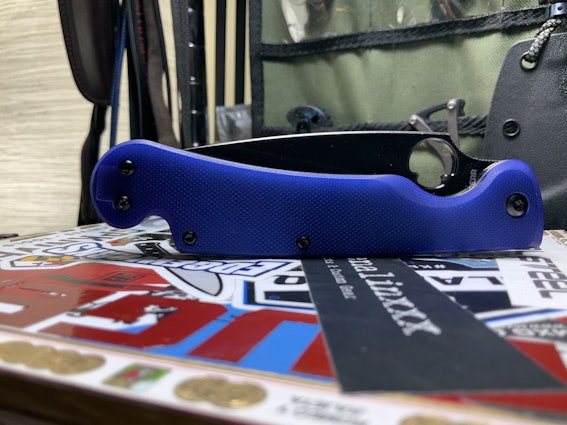
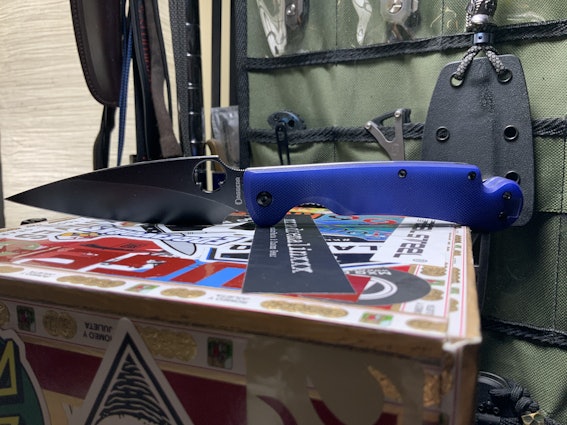
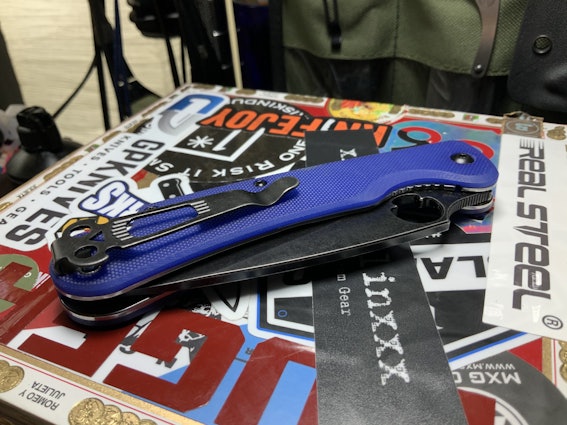
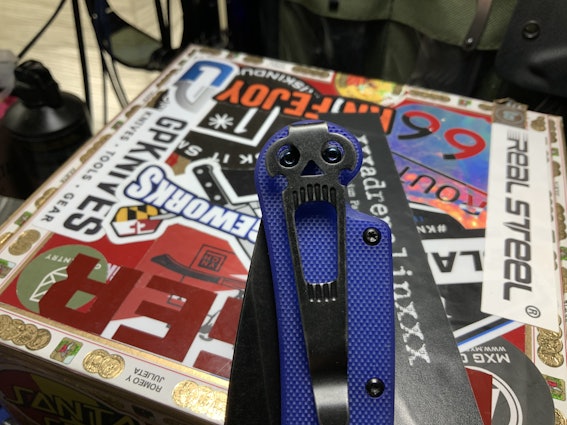





reswright
3850
Feb 15, 2021
Aquamarine Dye on Jade and Neon Green G-10:
Before:
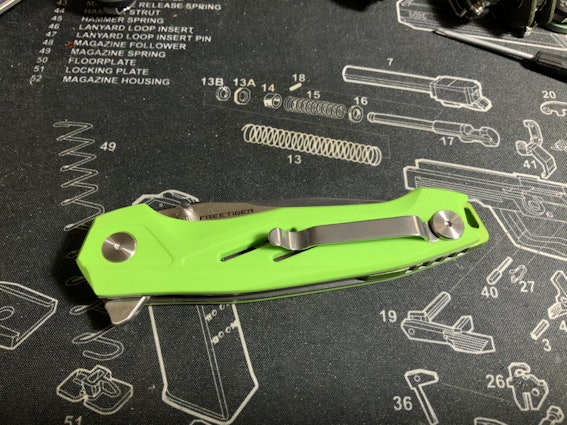
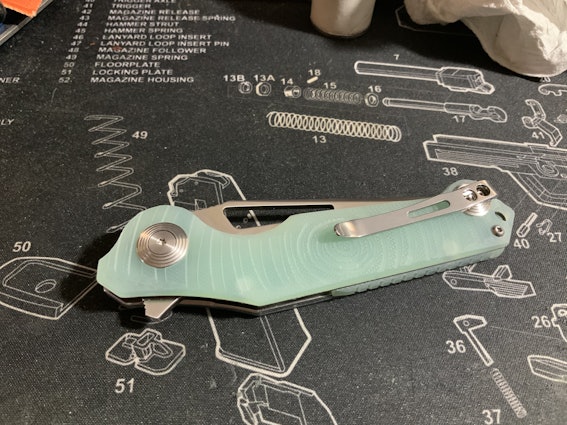
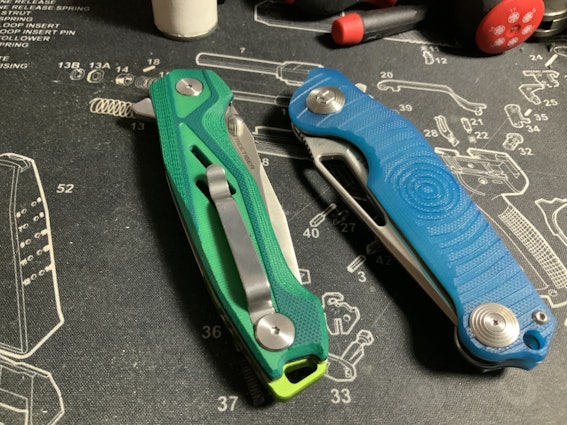




reswright
3850
Feb 9, 2021
If you like the idea of having a dyed jade G-10 handled knife.... but you don't like budget steel and you don't like D2.... but you still need to keep the entire cost under a bill? And you've been looking and looking for a good knife for it and not found one?
You will find CJRB Feldspars, both sizes, in black coated S35VN and jade G-10 in stock at one of the major players for under $80. Out of respect for Drop I won't link directly, but it's prolly the first place you'd go look for an exclusive in jade G-10. :)
CJRB is one of the best values in Chinese budget builds and the Feldspar is one of their best regarded knives, and S35VN is a legitimate super steel... so if you've been waiting for the stars to align, this might be your moment.
14themoney
1395
Jun 27, 2022
reswrightI have to agree. I have several CRJBs and I am very pleased with them.

reswright
3850
Feb 7, 2021
Linen Micarta Dyed Indigo
Coarse linen micarta is an old school material. Indigo is an old school dye. Let's see how they mix.
Before:
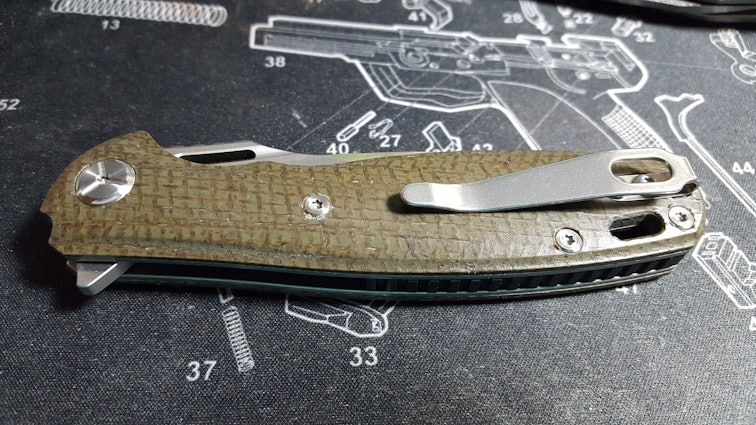
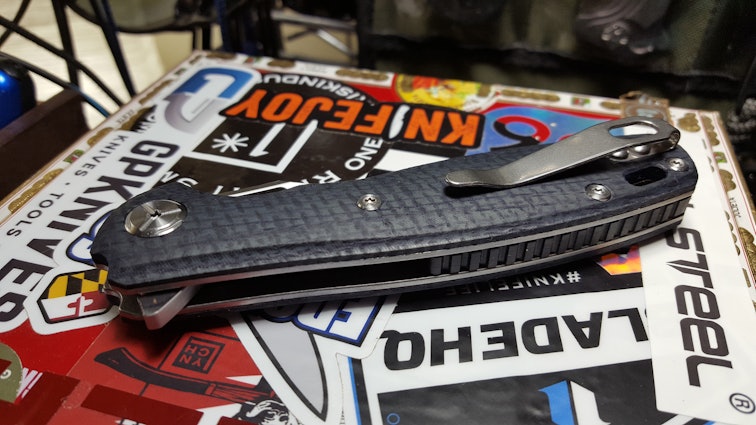
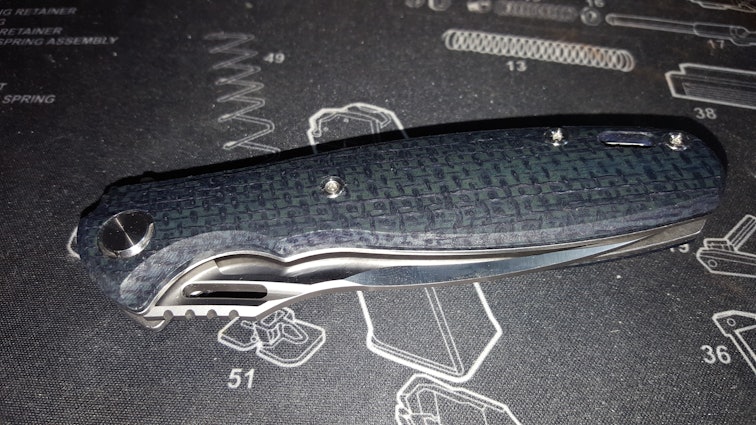



Showing 22 of 77
Related Posts
BillA2021
Buy replacement quartz movement
Is an original quartz movement or a suitable substitution available for my Wenger 7900X watch at a reasonable cost, or is this not feasible I’m new at this. Thanks.
Mar 18, 2021

reswright
Basic Flip Smoothing
So you picked up a budget bearing knife as a ‘project’ knife to putter around with and you’re looking for ideas? One thing you can do is polish the bearing works, smoothing both the flip and the close action until you've got some semblance of a noiseless flick open and a smooth, gravity drop shut. This can be done many, many different ways, as many ways as there are to smooth and then polish metal; your humble narrator prefers to use a Dremel, using the following steps. I should probably make some kind of disclaimer statement here - this guide is for people already handy with a Dremel. If you’re not already handy with one it’s best not to learn how to use one while handling pocket knives or other sharp and pointy things. Hand held high RPM rotary grinding tools can be surprisingly violent if they get out of your firm grasp, they can impart an astonishing amount of kinetic energy to small sharp things you're trying to polish, sending them flying further and faster than...
Feb 6, 2021
RayF
RayF's Guide to Thanksgiving Day Watches
Please do enjoy your Thanksgiving (for those of you in countries where that means something), but please, please, please--whatever you do--don't wear either of these tacky watches while you're doing it!
Nov 26, 2020
Trending Posts in More Community Picks

Graham88
Completely surprised by the lack of blade diversity here on Drop...
I’ve been a collector of Blades since before my teens, and a retailer coming up on 15… or maybe 20 years. Drop has really been kind of an interesting experience for me, because I do occasionally get to see some unusual tech and sometimes EDC items that otherwise I might not have been aware of. And maybe it’s because I have a deep love of cutlery and bladed weapons, but I find myself trolling through the site looking at it what’s available; and it’s just it’s pretty much the same. And the bladed community here is just always confused me.. every single knife is about the same, they’re almost all drop points and although the handle materials change and brands change.. it’s really just the same knife over and over and over again... occasionally you’ll see a tanto or a slight variant; but rarely… and almost never a serrated blade. And I’m just deeply amazed at this diversion of serrated blades. And I’m just surprised there isn’t more of a request for diversity here.... and I...
Mar 12, 2020
JellyDPhoto
Can we get Sony E-Mount or other mirrorless camera options please..
Would be nice to see some Sony E mount full frame cameras on here. I currently shoot with a A99 and they killed the lense path for better or more option lenses and now is all E-Mount. 🤔
Jan 13, 2020
RayF
There Are Pandas, and Then There Are Pandas.
And this isn't either of them! The Pandas we're talking about here, are watches, not bears. And what got me thinking about them (again) was a link posted this morning by @cm.rook who pointed a few of us to the very attractive (and not terribly priced) Yema "Rallygraph" Panda which, in it's most traditional arrangement, looks like the one on the left, but can also be had in the version on the right: The model on the left is a true Panda, while the model on the right is called a reverse Panda. The reason for that distinction is clear--Panda bears, only come in the first arrangement. Now at this point, everyone should be thinking about the most well-know Panda, The Rolex Panda, which is actually a Daytona, and among Rolex Daytonas, the most famous of which is the Paul Newman Daytona, which was famous first, because it was Paul's, and second because it sold at auction for $17.8 million (US Dollars). The story of that auction is well-known so I'll only...
Nov 8, 2019




